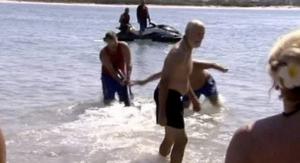WaterSame-day water test keeps beaches open, swimmers’ health protected
With warm summer days at the beach on the minds of millions of winter-weary people, scientists are reporting that use of a new water quality test this year could prevent unnecessary beach closures, while better protecting the health of swimmers.

Same day water test assures safety for swimmers // Source: xinjunshi.com
With warm summer days at the beach on the minds of millions of winter-weary people, scientists are reporting that use of a new water quality test this year could prevent unnecessary beach closures, while better protecting the health of swimmers. A study analyzing the accuracy of the test appears in American Chemical Society’ (ACS) journal Environmental Science & Technology.
An ACS release reports that Meredith B. Nevers and colleagues point out that decisions on whether water is safe for recreational use have been based on tests that actually show the condition of water in the past. Those tests involve sampling water for the E. coli bacteria used as red flags for fecal contamination, putting the samples in culture dishes and waiting to see if any bacteria grow. As a result, managers might close a beach based on fecal contamination that existed in the past, but posed no current threat. Likewise, they might keep a contaminated beach open because the water was clean in the past.
They describe analysis and validation of a new rapid water-quality test that could prevent beaches from being closed by providing accurate, same-day results of bacteria levels. Developed by the U.S. Environmental Protection Agency (EPA) , the test’s same-day results could help managers across the country determine whether beaches are safe for swimming.
The authors acknowledge funding from USGS Great Lakes Science Center.
— Read more in Meredith B. Nevers et al., “Choices in Recreational Water Quality Monitoring: New Opportunities and Health Risk Trade-Offs,” Environmental Science and Technology 47, no. 7 (5 March 2013): 3073–81 (DOI: 10.1021/es304408y)
